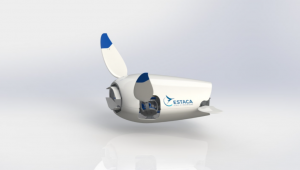
When it comes to solving human design challenges, Mother Nature really does know best. That Velcro fastening on your backpack, the warm, downy filling in your winter coat – these everyday inventions share something in common: they were inspired by the natural world around us. We call it biomimicry, a field of science that learns from and emulates natural processes in technological and industrial design to create sustainable products and systems that function exactly like nature.
Biologist and natural history writer Janine Benyus is considered one of the first to have come up with the term biomimicry. “It is important to look at nature – after all, it has had 3.8 billion years to come up with ideas,” she said.
Recognizing the value that nature-inspired, or biomimetic, designs could bring to businesses and wider society, Benyus co-founded the Biomimicry Institute in 2006. The non-profit’s mission is to provide the information and resources to make biomimicry an integral part of the design process and promote its benefits. Why? Benyus and her colleagues believe that by tapping into nature and bridging the gap between biology and design, we can solve critical sustainability challenges and build a healthier planet.
“We envision a world in which people view nature not as a warehouse of goods but as a storehouse of knowledge and inspiration for regenerative solutions,” the non-profit said.
What are the three types of biomimicry?

Biomimicry is typically broken down into three key elements:
- Emulate: copying form and shape in product designs
- Ethos: Understanding and recreating a process such as flight or camouflage
- Connect: Learning how nature truly works to emulate biological strategies and mimic ecosystems such as an ant colony.
In basic terms then, biomimetic design can be used to create a product, a process, or a combination of the two. The Nature of Fashion report calls on the fashion industry to embrace all three elements and act like a natural ecosystem: creating innovative materials that are organic and built to decompose; and embracing design and production processes that work in harmony with the biosphere and the global economy.
What is an example of biomimicry?
Back in the 15th Century, Leonardo da Vinci studied bird flight and gained insights he’d use to design his famous flying machine. Engineers have long studied birds’ form and movements to unlock the secret of flight.
From da Vinci’s glider to modern aerospace companies like Airbus, innovators continue to build on that premise, looking not only to birds but to creatures like sharks to figure out how to make aircraft a truly sustainable mode of transport. One of Airbus’s latest biomimicry projects is the eXtra Performance Wing demonstrator, active wing control technology that automatically adjusts to improve wing aerodynamics and performance so that planes can soar like an eagle.
There are plenty of other fascinating examples of biomimicry in action too. Take spider silk: The fine, sticky, stretchy fiber that spiders spin into webs is relatively tougher than steel and more elastic than rubber. Scientists see the potential of spider silk for all manner of applications, including bullet proof armor, surgical sutures and even bridge cables. The biggest challenge they face is creating enough of the stuff. It’s why organizations like Spintex Engineering are focusing their efforts on scaling production of spider silk – or at least a synthesized version of it. This particular company has found a way of mimicking spiders’ spinnerets, allowing it to spin fiber from liquid gel at room temperature without using harsh chemicals.
Here are some more examples of biomimicry:
- A non-toxic adhesive that can be used underwater, inspired by mussels
- An antibacterial surface coating for glass and ceramic based on pitcher plants
- Natural building insulation made from mushrooms
- A water purification system modeled after the behavior of pufferfish
- Climbing robots inspired by the movements of lizards
Dassault Systèmes and biomimicry

Like the scientists trying to recreate spider silk at scale, others are also increasingly searching for ways to harness nature’s secrets to create better products and processes. But, unlike nature, they don’t have 3.8 billion years to refine their R&D.
That’s where technology like the 3DEXPERIENCE platform comes in. Dassault Systèmes solutions allow researchers, engineers and scientists to mimic evolution in the virtual world – modelling their designs and testing thousands of ideas in silico to quickly identify the winning traits for a new generation of sustainable products.
Nature provides the blueprint and digital technology allows us to study it, understand it and, ultimately, replicate it.
Here are some amazing biomimicry projects Dassault Systèmes has been involved in:
- Artist Kate Reed works from the 3DEXPERIENCE Lab’s Fab Lab in Boston, USA. Her Beyond Biomimicry collection draws inspiration directly from nature to create wearable technology.
- EEL Energy used the 3DEXPERIENCE platform to develop an undulating membrane that mirrors the motion made by swimming fish to generate electricity from underwater currents.
- The Green Turtle Project brought together experts, including specialists from Dassault Systèmes, to create a turtle-like robot that collects rubbish floating on the ocean’s surface.
Why biomimicry matters
The beauty of biomimicry is that its impact can be felt across all industries and disciplines, from aerospace to health and beauty. Today, we face the colossal challenge of moving away from the traditional energies, materials and methods that threaten our planet, and making the transition to a carbon-neutral and more sustainable way of life. Ironically, it is nature – the very thing we are destroying – that holds the key to our future.
“When we look at what is truly sustainable, the only real model that has worked over long periods of time is the natural world,” Benyus said.
The question is, then, how quickly can we mimic nature to help ourselves, each other, and the planet?
For more information:

